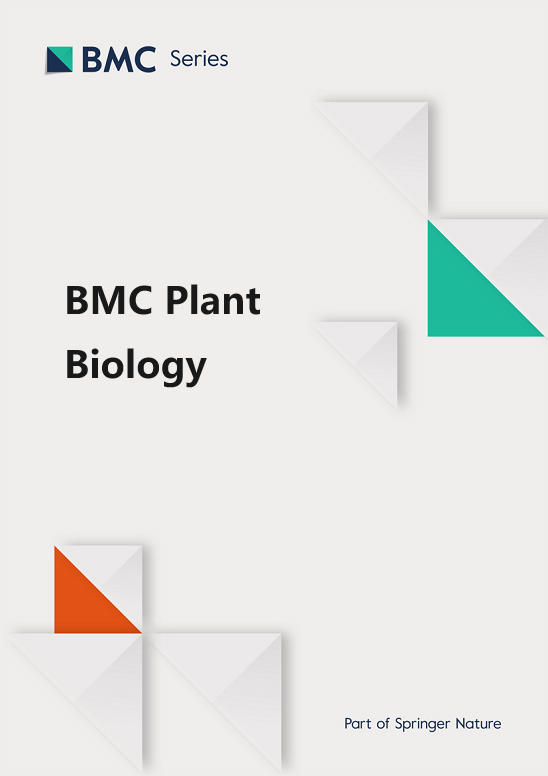QTL analysis of native Fusarium head blight and deoxynivalenol resistance in ‘D8006W’/’Superior’, soft white winter wheat population
IF 4.3
2区 生物学
Q1 PLANT SCIENCES
引用次数: 0
Abstract
Fusarium head blight (FHB), caused by Fusarium graminearum, is a major disease of wheat in North America. FHB infection causes fusarium damaged kernels (FDKs), accumulation of deoxynivalenol (DON) in the grain, and a reduction in quality and grain yield. Inheritance of FHB resistance is complex and involves multiple genes. The objective of this research was to identify QTL associated with native FHB and DON resistance in a ‘D8006W’/’Superior’, soft white winter wheat population. Phenotyping was conducted in replicated FHB field disease nurseries across multiple environments and included assessments of morphological and FHB related traits. Parental lines had moderate FHB resistance, however, the population showed transgressive segregation. A 1913.2 cM linkage map for the population was developed with SNP markers from the wheat 90 K Infinium iSelect SNP array. QTL analysis detected major FHB resistance QTL on chromosomes 2D, 4B, 5A, and 7A across multiple environments, with resistance from both parents. Trait specific unique QTL were detected on chromosomes 1A (visual traits), 5D (FDK), 6B (FDK and DON), and 7D (DON). The plant height and days to anthesis QTL on chromosome 2D coincided with Ppd-D1 and were linked with FHB traits. The plant height QTL on chromosome 4B was also linked with FHB traits; however, the Rht-B1 locus did not segregate in the population. This study identified several QTL, including on chromosome 2D linked with Ppd-D1, for FHB resistance in a native winter wheat germplasm.软白冬小麦群体'D8006W'/'Superior'的原生镰刀菌头疫病和脱氧雪腐镰刀菌烯醇抗性的 QTL 分析
由禾谷镰刀菌(Fusarium graminearum)引起的镰刀菌头孢疫病(FHB)是北美小麦的一种主要病害。FHB 感染会导致镰刀菌损伤籽粒(FDKs)、脱氧雪腐镰刀菌烯醇(DON)在谷粒中积累、品质下降和谷粒减产。FHB 抗性的遗传很复杂,涉及多个基因。本研究的目的是在'D8006W'/'Superior'软白冬小麦群体中鉴定与本地 FHB 和 DON 抗性相关的 QTL。表型分析是在多种环境下重复的 FHB 田间病害苗圃中进行的,包括形态和 FHB 相关性状的评估。亲本品系具有中等程度的 FHB 抗性,但该群体出现了转基因分离现象。利用小麦 90 K Infinium iSelect SNP 阵列的 SNP 标记绘制了该群体的 1913.2 cM 连接图。QTL 分析检测出了染色体 2D、4B、5A 和 7A 上的主要 FHB 抗性 QTL,这些 QTL 跨多个环境,其抗性来自双亲。在染色体 1A(视觉性状)、5D(FDK)、6B(FDK 和 DON)和 7D(DON)上检测到了特定性状的独特 QTL。染色体 2D 上的株高和花期天数 QTL 与 Ppd-D1 重合,并与 FHB 性状相关。染色体 4B 上的株高 QTL 也与 FHB 性状相关;但 Rht-B1 基因座在群体中没有分离。这项研究在本地冬小麦种质中发现了几个抗FHB的QTL,包括与Ppd-D1相连的染色体2D上的QTL。
本文章由计算机程序翻译,如有差异,请以英文原文为准。
求助全文
约1分钟内获得全文
求助全文
来源期刊

BMC Plant Biology
生物-植物科学
CiteScore
8.40
自引率
3.80%
发文量
539
审稿时长
3.8 months
期刊介绍:
BMC Plant Biology is an open access, peer-reviewed journal that considers articles on all aspects of plant biology, including molecular, cellular, tissue, organ and whole organism research.
 求助内容:
求助内容: 应助结果提醒方式:
应助结果提醒方式:


